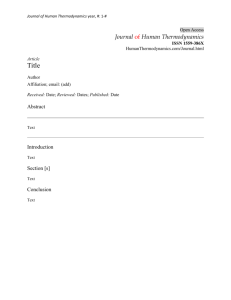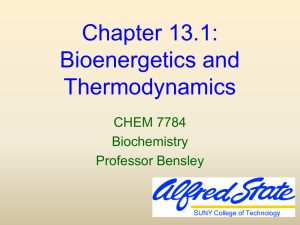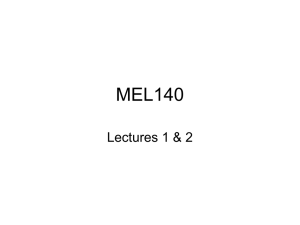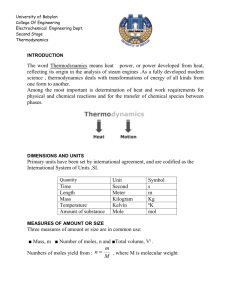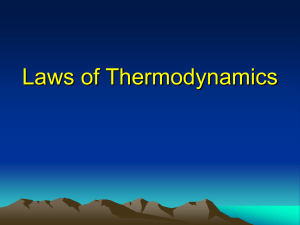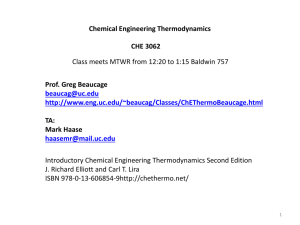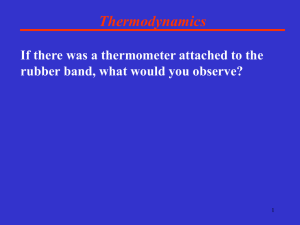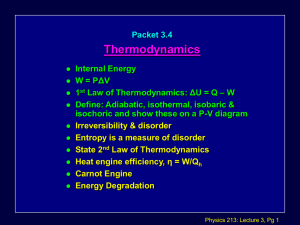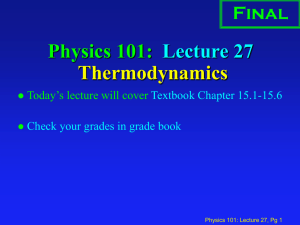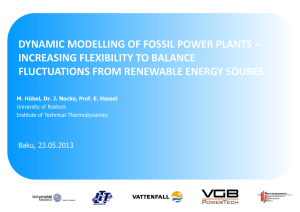Thermodynamics I
advertisement
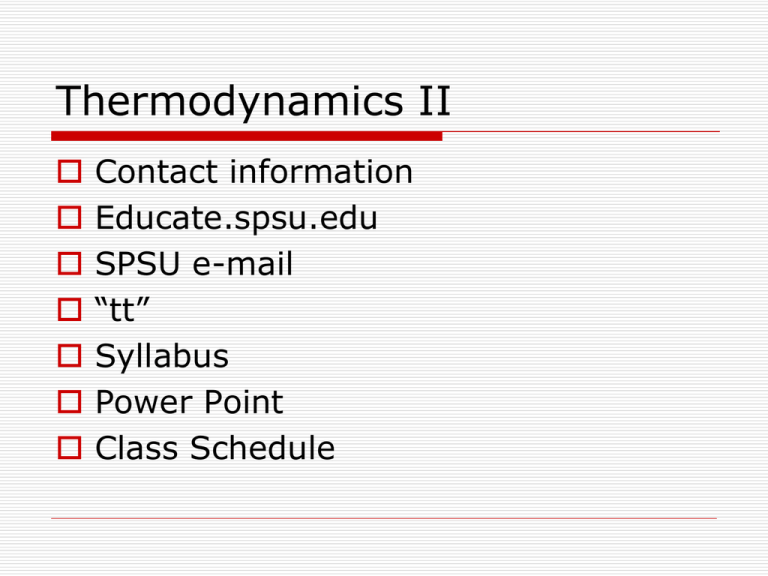
Thermodynamics II Contact information Educate.spsu.edu SPSU e-mail “tt” Syllabus Power Point Class Schedule Thermodynamics II Outcomes Credits Text: M&S 6th or 7th Edition Thermodynamics II Learn A A basis for learning B • • • • Read text Examples Homework Questions Practice Thermodynamics II Principles → working equations → applications • Thermo I: lots of principles & some working equations • Thermo II: some working equations & lots of applications Thermodynamics II No cookbook Orderly/logical approach • • • • • • Read carefully Describe system Sketch Assumptions Principles & working equations Solve • Reasonable Thermodynamics II • • • Read Type of system Type of working fluid Type of process Thermodynamics II • • • • Assumptions – reasonable Steady state Ideal gas Incompressible liquid KE & PE often negligible Solve Equation Include units Consistent unit system Significant digits Thermodynamics II • • • • Reasonable Make sense? Sign Units Magnitude Thermodynamics II • • • “Heat strength” Energy transformations Transportation Comfort Manufacturing Energy usage Effective – thermodynamics understanding Costs Pollution Resource conservation Thermodynamics II Energy usage ~10+% income 24 % Nuclear Power SPSU: Nuclear Power Generation & Training sessions. Thermodynamics Basics • • Systems Closed Open Processes • • • • • Isothermal Isobaric Isometric Adiabatic Isentropic • Polytropic Thermodynamics Basics Working fluid: changes phase processes • Steam • R134a • R22 • NH3 • Propane Working Fluid – phase change • • • • • Property tables State diagram: pressure & volume Compressed liquid Saturated liquid Vapor dome – quality Saturated vapor Superheated vapor Working Fluid – phase change Properties: P, T, v, u, h, s Working fluid No phase change: ideal gas Ideal gas law Caloric equations for u & h: constant specific heats Variable specific heats: table for air as ideal gas Thermodynamic basics State – defined by properties Process – described by change of state First Law of Thermodynamics • • • • • Conservation of mass & energy Closed system: Heat: direction & magnitude Work: direction & magnitude Kinetic energy: property Potential energy: property Internal energy: property First Law of Thermodynamics Open system: control volume Additional: flow energy * Internal energy u for CLOSED SYSTEM * enthalpy: h = u+pv for OPEN SYSTEM Cycles Two or more processes in series which return working fluid to its initial state Heat engine Reversed cycle Heat engine Thermal efficiency Reversed cycle Coefficient of performance Reversed cycle COP cooling (β): refrigeration & air conditioning COP heating(): heat pump Ideal cycle Carnot: ideal cycles with no wasted energy. Ideal COP • Cooling • Heating Assignment 3.129 & 3.130 4.43 & 4.45 QUESTIONS Examples 8.2 8.17 8.29


